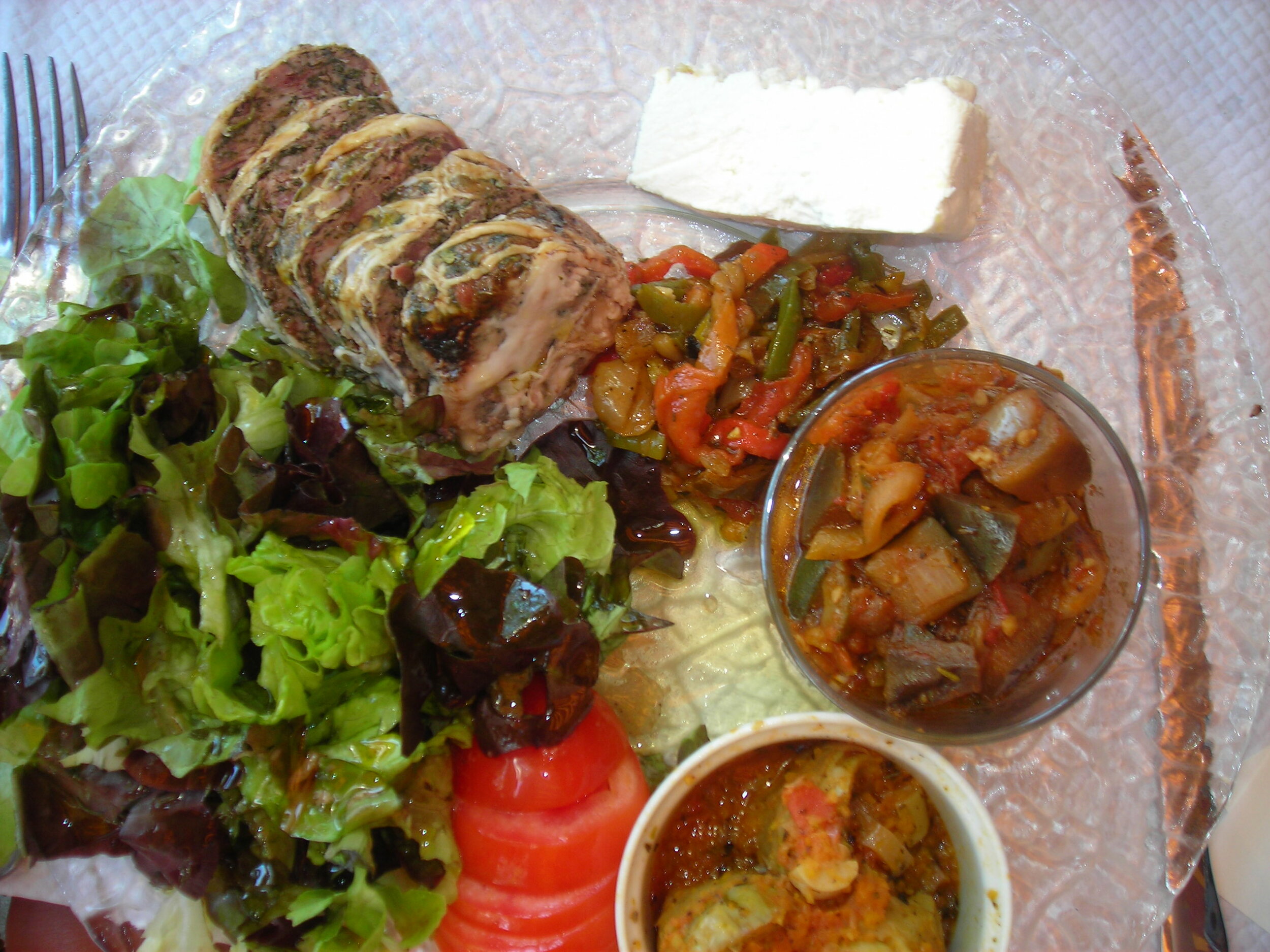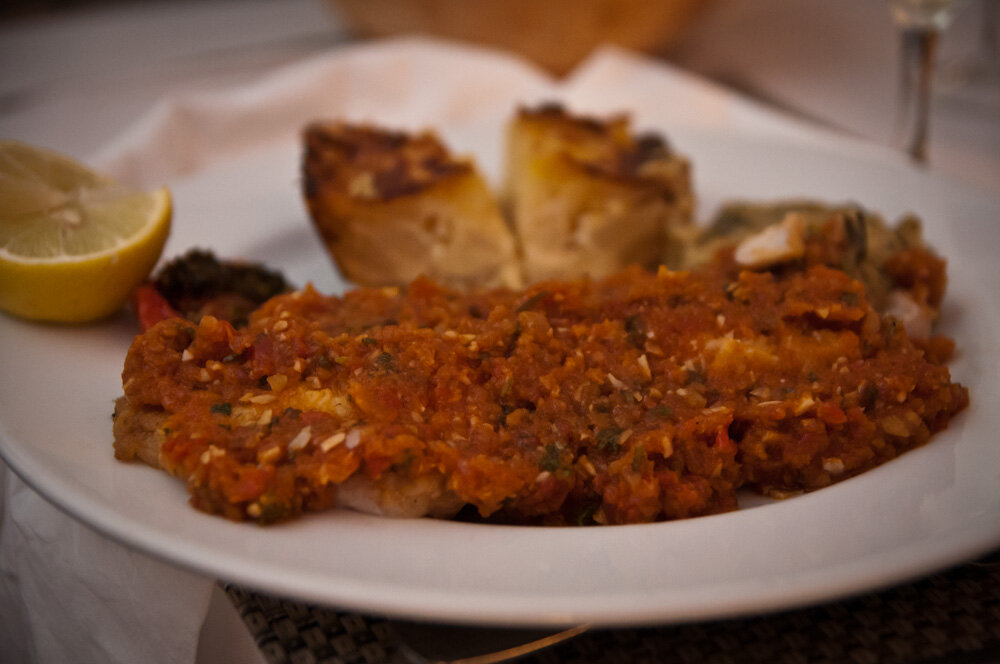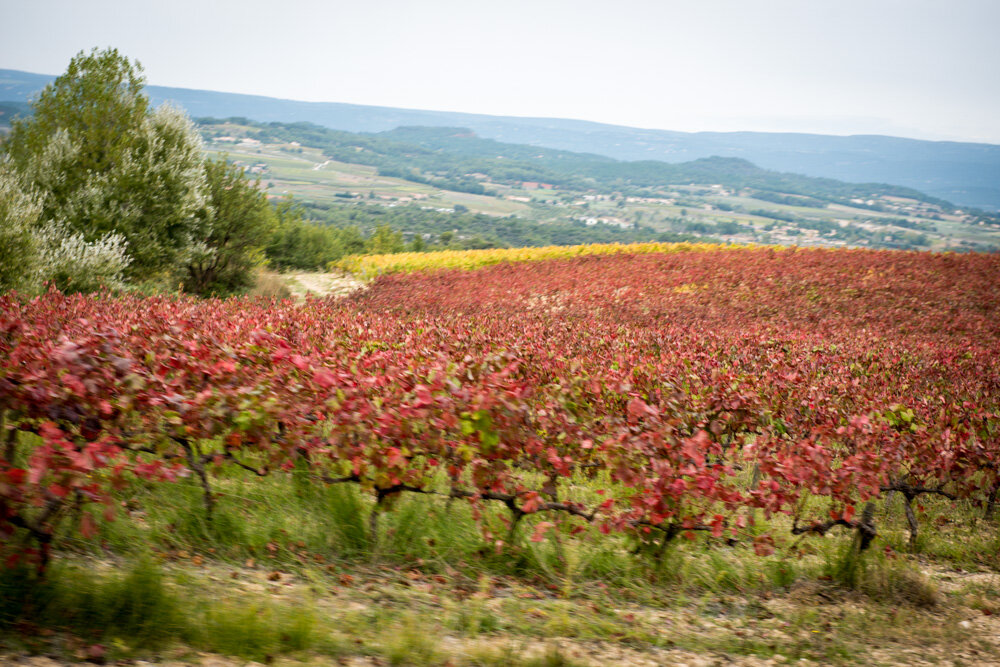
The world of travel to all of our outstanding destinations
Tour France: Recipes from Locals & Insider Experiences during Vacations in Provence
Tour France: Recipes from Locals & Insider Experiences during Vacations in Provence I've been touring France and leading small custom groups on "insider vacations" for a while now. Some of what we do is haute cuisine and grand chefs with Michelin stars. But, some of the best, most authentic experiences occur in the countryside and about country cooking and local lore. I have been collecting recipes, adapting them and teaching French cuisine for almost as long as I have been leading trips.Each recipe has a story. This one is very special. The story is as deliciously amusing as this country recipe is tasty. So for a casual Provencal experience, try this story on for size!
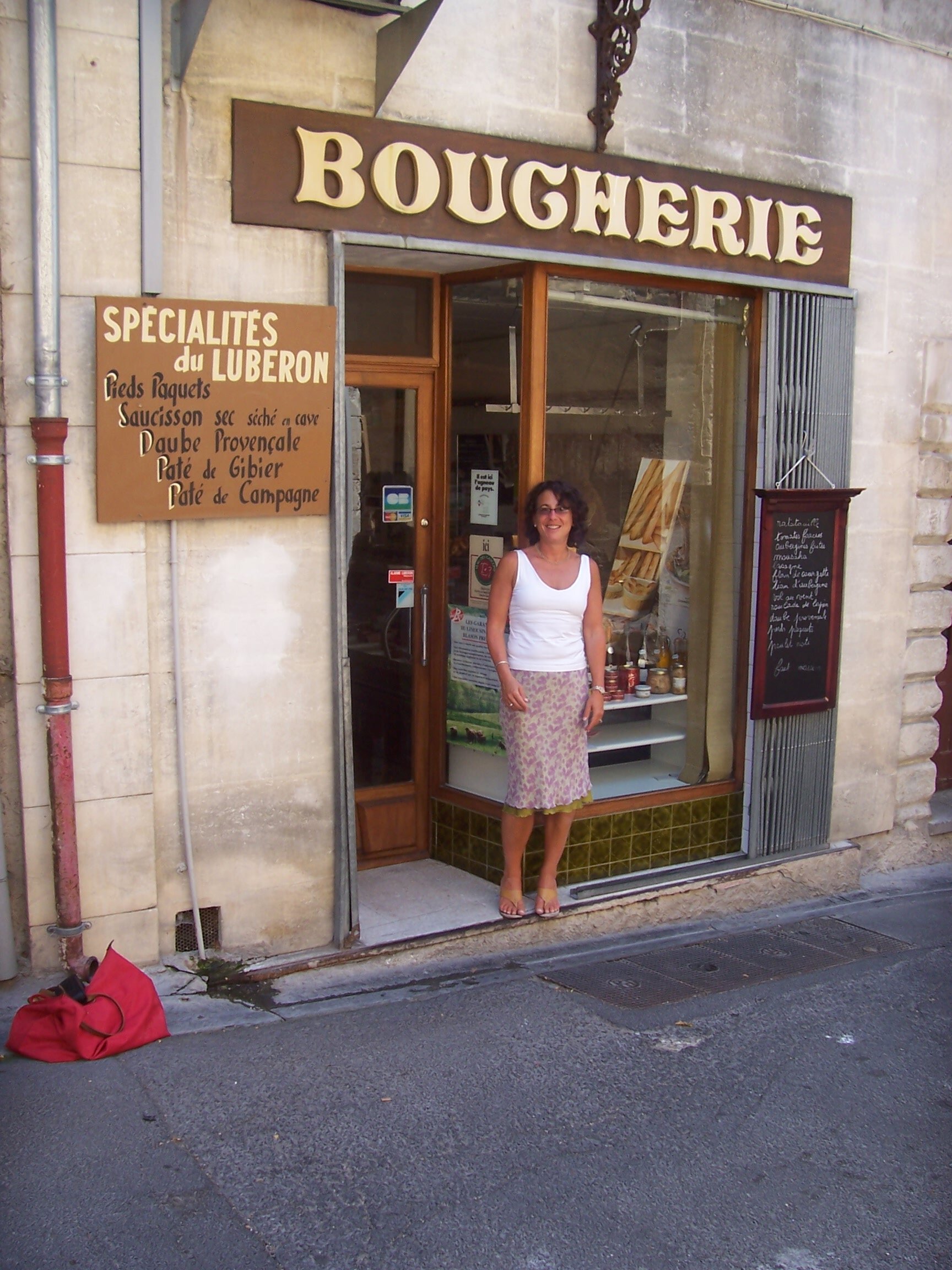 Everybody should meet their local French butcher. He is charming, funny, full of advice and local color. One day several years ago, while attempting to test some new recipes as well as research an area winery, and be very efficient by accomplishing this in one afternoon, a woman who worked for me and I decided to visit the local butcher of Menerbes instead of the one in our nearby town. The weather was quite hot and we needed to order meat, but didn’t want to cart it around with us all day, to roast in the strong provencal sun. In this way, we two American women, entered the Boucherie in Menerbes, requesting, ever so politely, in French, to please have a chicken (and rabbit, if one was available) prepared for us. We asked if he would be so kind as to hold it for us in refrigeration for several hours. This was no problem. He would be glad to help us, but it’s not possible that we are American he says. He is convinced that since we speak French and wish to cook…..well, clearly we must be English or Australian or just simply confused. No, we assure him we are sure of our origins. To make conversation, we inquired politely about several of the prepared foods he has in his case.
Everybody should meet their local French butcher. He is charming, funny, full of advice and local color. One day several years ago, while attempting to test some new recipes as well as research an area winery, and be very efficient by accomplishing this in one afternoon, a woman who worked for me and I decided to visit the local butcher of Menerbes instead of the one in our nearby town. The weather was quite hot and we needed to order meat, but didn’t want to cart it around with us all day, to roast in the strong provencal sun. In this way, we two American women, entered the Boucherie in Menerbes, requesting, ever so politely, in French, to please have a chicken (and rabbit, if one was available) prepared for us. We asked if he would be so kind as to hold it for us in refrigeration for several hours. This was no problem. He would be glad to help us, but it’s not possible that we are American he says. He is convinced that since we speak French and wish to cook…..well, clearly we must be English or Australian or just simply confused. No, we assure him we are sure of our origins. To make conversation, we inquired politely about several of the prepared foods he has in his case.
In France, it is quite common for Butcher to also sell certain prepared items such as ratatouille, grated carrot salad, stuffed vegetables, roasted tomatoes/eggplants, and the like. He starts waxing poetic about his ratatouille, which, coincidentally, he is in the process of making at this very moment. When we mention that we also are planning to make this dish later that day, he insists that we follow him through his shop (which he cavalierly leaves unattended) through his living quarters, and laundry area to his kitchen where he is making the biggest vat of ratatouille known to mankind. As we look around, we see not only the vat of simmering fragrant vegetables, but colanders of cooked vegetables, tilted this way and that, and a large fry pan still warm and oily from before we entered the shop. Next to the stove was a small metal framed kitchen table, with an ashtray, a water glass ½ full of red wine, and the corked bottle. Clearly this was the perch from which Monsieur le Boucher watched his ratatouille simmer. The Butcher painstakingly describes the secret to his ratatouille, which is that one must first cook each vegetable separately, and then drain them before finally creating the mélange. He thoughtfully stirs the pot. After we thank him, showing our appreciation for his generosity, he guided us through the doors of the now reopened Boucherie, and bellows into the street a hearty "a bientot". When we return several hours later, the butcher is in the shop, but comes to the street with our bird, to chat with us. That we are stopped in the middle of a tiny one lane winding road (one of only two that exit the entire village) is of no consequence to him. He chats boisterously with us, asking us about our day, the recipes, whether we’d like to take some ratatouille and nobody seems bothered by the fact that they are held up in ‘traffic’. Nobody other than us, that is. The car behind us is content to wait. After all, this is important. We are discussing dinner!
When we mention that we also are planning to make this dish later that day, he insists that we follow him through his shop (which he cavalierly leaves unattended) through his living quarters, and laundry area to his kitchen where he is making the biggest vat of ratatouille known to mankind. As we look around, we see not only the vat of simmering fragrant vegetables, but colanders of cooked vegetables, tilted this way and that, and a large fry pan still warm and oily from before we entered the shop. Next to the stove was a small metal framed kitchen table, with an ashtray, a water glass ½ full of red wine, and the corked bottle. Clearly this was the perch from which Monsieur le Boucher watched his ratatouille simmer. The Butcher painstakingly describes the secret to his ratatouille, which is that one must first cook each vegetable separately, and then drain them before finally creating the mélange. He thoughtfully stirs the pot. After we thank him, showing our appreciation for his generosity, he guided us through the doors of the now reopened Boucherie, and bellows into the street a hearty "a bientot". When we return several hours later, the butcher is in the shop, but comes to the street with our bird, to chat with us. That we are stopped in the middle of a tiny one lane winding road (one of only two that exit the entire village) is of no consequence to him. He chats boisterously with us, asking us about our day, the recipes, whether we’d like to take some ratatouille and nobody seems bothered by the fact that they are held up in ‘traffic’. Nobody other than us, that is. The car behind us is content to wait. After all, this is important. We are discussing dinner!
Ratatouille recipe* It must be stated that Ratatouille is to the Provencale what meatloaf is to the typical American family. Every family has their own recipe with it’s own special ingredients. More often than not it is made with a handful of this and a handful of that. Like meatloaf here, it is the sort of dish that non-cooks, cook. And like meatloaf, it is often best the next day served cold, or even reheated. Sitting overnight allows the flavors to meld nicely. Below is my favorite recipe. It seems to be what works best both in France and the United States, with their different sorts and size s of produce. But that doesn’t mean you can’t alter the proportion of vegetables, or even substitute them….Just make sure to take the butcher’s advice, and cook each one separately before creating the mélange.1 Red Pepper10oz Eggplant, cut into ¾ inch cubes2 lb small green zucchini, cut into ¾ inch cubes2 lb ripe tomatoes, peeled, seeded and coarsely chopped1 ib sweet onion, coarsely chopped12 T olive oil or peanut oil (peanut oil can be heated hotter, but olive oil lends a nice flavor)1 bay leaf2-3 sprigs of fresh Thyme4 cloves garlic, minced1 teaspoon sugarSalt and pepper6 leaves of basil, chopped.Heat 2 T of oil, cook peppers for a couple minutes. Drain peppers and transfer peppers to a colander. Wipe pan clean of excess oil,.Add 3 T of oil to the pan and sauté onions on medium heat for several minutes until lightly browned. Transfer onions to colander, and wipe pan. Add 2 T of oil and reheat pan. Brown zucchini at medium high heat and drain, and add to colander. Last, add 2 more T oil to pan, heat at medium high heat and brown eggplant for several minutes, stirring as needed, and drain and add to colander. Heat a large pan, one large enough to accommodate all the vegetables. Add the remaining oil and heat. Add garlic and sauté for one minute. Add tomatoes, sprinkle with sugar (if you have very sweet, ripe, flavorful tomatoes, the sugar will be unnecessary) and add herbs, except basil. Bring the the tomatoes and their liquid to a boil. Add salt and pepper and all the other vegetables, stir, reduce heat and cover. Cook for 30 minutes or more until very tender. Stir occasionally to avoid burning. When finished, remove the pot from the heat and remove Thyme sprigs and bay leaf. Add the fresh basil. This dish is best the longer you let it sit, so the flavors of the vegetables can meld properly. Let the ratatouille sit in the pot off of the heat at least another 30 minutes, or better yet, cool the pot down and refrigerate overnight.So, if you can't attend one of our amazing trips to Provence, and experience Bliss with us, then at least visit your local farm and enjoy some freshly made ratatouille!
French Olive Oils: Tips for How to Choose the Best
Olive oil is fabulous, and comes in a huge variety of flavors and prices. That seems to surprise people. To know the basics is important. What olives you use and the method of pressing them affects flavor. The way you store and use oils also affects flavor. Below are some tips for Olive Oil use that we teach at Bliss Travels when we do tastings in France.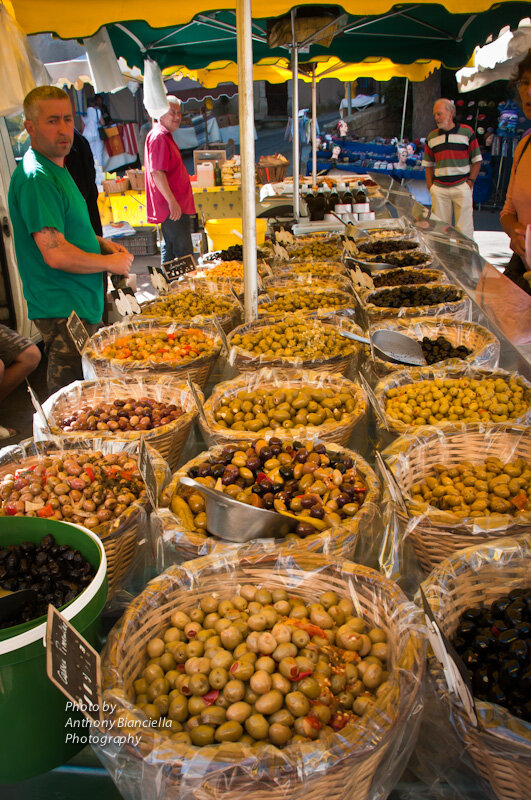 1. Olive oil should be cold pressed. Why? Heat destroys the oil. The best quality oils are cold pressed, and will say so on the label. This brings up another point.2. Light and heat destroy Olive oil. So, store your oils in a cool place, in dark bottles or out of the sunlight.3. Olive oil has a low "smoking" point. This means it burns easily. So, if you cook with it, watch the temperature, and don't use an expensive oil for cooking.4. What are you using the oil for? A drizzle on veggies or fish? Pick a flavorful one --fruity or spicy depending upon the dish you are serving. Last year, we gave our clients this amazing meal in Provence, and the olive oil on this dish was from local trees, to complement the local produce!
1. Olive oil should be cold pressed. Why? Heat destroys the oil. The best quality oils are cold pressed, and will say so on the label. This brings up another point.2. Light and heat destroy Olive oil. So, store your oils in a cool place, in dark bottles or out of the sunlight.3. Olive oil has a low "smoking" point. This means it burns easily. So, if you cook with it, watch the temperature, and don't use an expensive oil for cooking.4. What are you using the oil for? A drizzle on veggies or fish? Pick a flavorful one --fruity or spicy depending upon the dish you are serving. Last year, we gave our clients this amazing meal in Provence, and the olive oil on this dish was from local trees, to complement the local produce! A salad dressing? Pick one based on the other ingredients in the dressing. Using oil in your pan so food doesn't stick? Pick the least expensive, lightest flavored oil.In the below picnic we brought for clients on the TGV train to Provence, we have 3 oils being use. The first for the vinaigrette (notice the dark bottle), is mild, but fruity as it is mixed with vinegar, mustard, salt...and for the artichoke. The second is in the chicken presse, with zucchini --a strong spicy oil, to hold it's own with the ingredients. Last, there is a mild oil used in cooking the vegetable tians.
A salad dressing? Pick one based on the other ingredients in the dressing. Using oil in your pan so food doesn't stick? Pick the least expensive, lightest flavored oil.In the below picnic we brought for clients on the TGV train to Provence, we have 3 oils being use. The first for the vinaigrette (notice the dark bottle), is mild, but fruity as it is mixed with vinegar, mustard, salt...and for the artichoke. The second is in the chicken presse, with zucchini --a strong spicy oil, to hold it's own with the ingredients. Last, there is a mild oil used in cooking the vegetable tians.
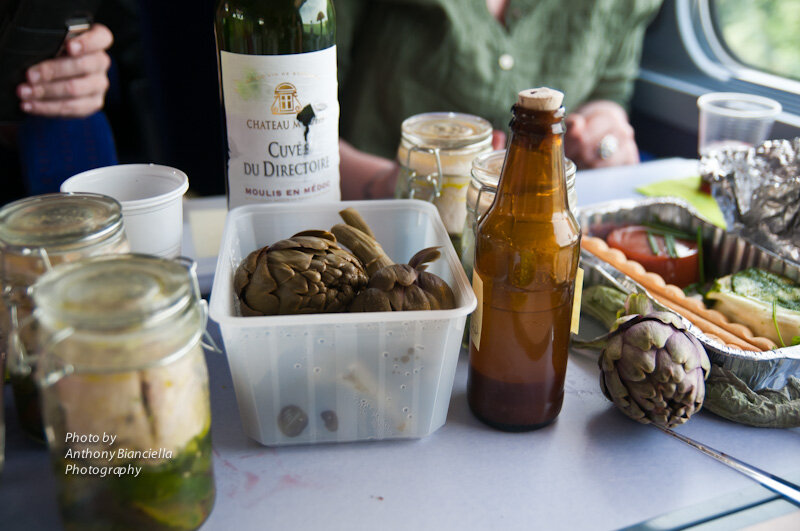 The best way to learn about the oils and to choose the ones you most like is to taste them plain or with a bit of bread. Visit an Olive Oil mill. (We do all the time on our trips) Plan different tastings --and then make spiced oils for breads. The more you try them, the more you'll figure out which oils work best for which of your dishes.
The best way to learn about the oils and to choose the ones you most like is to taste them plain or with a bit of bread. Visit an Olive Oil mill. (We do all the time on our trips) Plan different tastings --and then make spiced oils for breads. The more you try them, the more you'll figure out which oils work best for which of your dishes.
